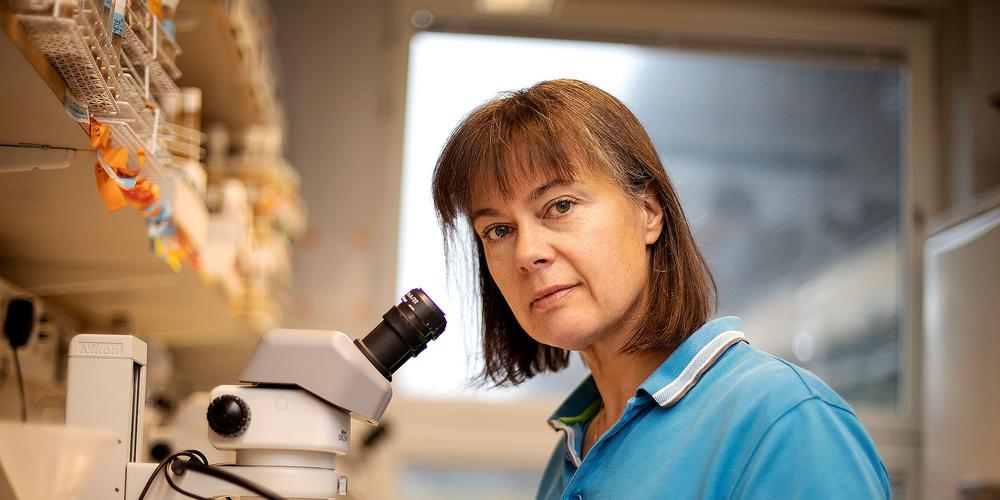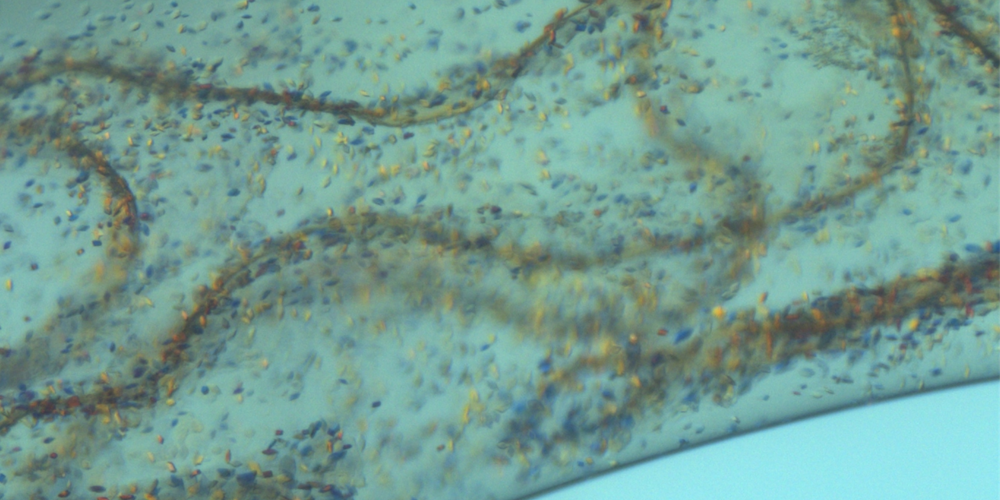
- Home
- Research
- Find research
- The cell holds important answers
The cell holds important answers
Molecular life science researchers are on a voyage of discovery within cells.
By studying the processes that take place in all living organisms at molecular level, we can find answers to many questions that ultimately contribute to a better life for us as humans.
“NATURE HAS OPTIMISED the functions of chemistry,” says Professor of Biochemistry Richard Neutze, coordinator of the molecular life science thematic area. “Much of our research involves understanding how a reaction in the cell starts, and what happens next.”
Life science studies everything from individual atoms to entire organisms, such as the human body. As the name suggests, the molecular life science field focuses on what happens in cells at molecular level.
“We aim to understand biological processes by describing the composition, structure and function of molecules and cells,” explains Professor Neutze. “We can then manipulate these processes through genetic engineering or by using different pharmaceutical compounds to fix something that doesn’t work or to change an undesirable process, as is often the case in disease.”
MORE THAN 60 RESEARCH TEAMS at the University of Gothenburg are looking for the next big breakthrough in molecular life science. They are studying proteins, membrane functions, sugar structures, energy transfers and photo-activated systems in cells. And they are enjoying considerable success – their scientific papers echo around the world amid fierce international competition.
“Our research stands up very well in comparison. We have strength and breadth, thanks largely to the fact that we work across faculty borders with colleagues at Sahlgrenska Academy and the IT Faculty.”

Professor Ruth Palmer at Sahlgrenska Academy is studying how incoming signals control a cell. These signals are picked up by receptor proteins, which cause the cells to change their behaviour. However, the receptors are sometimes activated incorrectly and this can lead to cancer. Professor Palmer’s research team is trying to understand how the signalling systems work and why they sometimes go wrong, for example to improve the diagnosis and treatment of lung cancer and childhood neuroblastoma.
“This is an excellent example of molecular life science,” she says. “We want to understand the mechanisms underlying different biological processes. To do this, we use a range of different life science techniques, from elegant genetic modulations with the CRISPR genetic scissors to highly technical methods that enable us to describe the proteins and their modifications.”

THE BOUNDARIES BETWEEN medicine and chemistry are becoming blurred, and researchers at the different faculties are happy to help each other. Professor Palmer believes that selecting the right technical method and then finding someone who knows how to use it correctly will be a key factor for answering challenging questions.
“This means that many of us work in a highly interdisciplinary way, with partners and facilities that can contribute expertise within different fields. These collaborations often bring unexpected benefits, because other researchers think about problems in a different way. And interdisciplinary research collaborations often end up being a lot of fun!”
Progress within life science research is linked to the development of new technologies that allow us to study what was previously unknown within cells. The size of what can be observed and analysed is now down to atomic and molecular levels, placing different demands on equipment and research skills than before.

“We use microspectroscopy, X-ray crystallography, NMR and electron microspectroscopy in our research,” continues Professor Neutze. “Our important infrastructure enables us to conduct cutting-edge research, including at the Swedish NMR Centre and at MAX IV Laboratory in Lund. There is also other equipment that we don’t have, so our researchers have to travel and collaborate with other researchers around the world. This can be beneficial, although we would like to have a high-quality electron microscope adapted to our research.”
HOWEVER, MANY RESEARCHERS never put on their lab coats. They carry out all their research in a computer environment, using data generated by other researchers. Using the laws of chemistry and physics, scientists can come up with explanations for what happens in the cell. In recent years, machine learning and the rise of AI have brought about a minor revolution in molecular life science.
“Machine learning can make a big difference thanks to its enormous capacity,” he adds. “Take cell division, for example. Many parallel processes take place in the cell before division to make everything work, and to prepare for the duplication of all functions. It’s not easy to study an individual process, because there’s so much happening at the same time. It’s a bit like looking for a needle in a haystack. Machine learning can weed out all the extraneous factors and focus on what you want to find out about.”
MACHINE LEARNING CAN also be extremely useful when researchers need to find an optimal molecule to change a process in the cell. Testing which molecule is best suited to the task can be done in a fraction of the time taken by conventional computers.
“We can make great advances in basic research. And there are plenty of fascinating functions of living organisms still waiting to be explained. I’m researching how photosynthesis works, how cells can convert sunlight into energy. Once we have the answer, we hope it can be used in many different applications. Solar cells that mimic photosynthesis, for example.”
Molecular life science is one of the major, important research fields in science and medicine. The CRISPR genetic scissors and knowledge about mRNA vaccines that protect against Covid-19 are two key advances that are contributing towards better health, both now and in the future. If research is to keep making progress, we will need both significant financial investments and sharp new minds choosing to study molecular life science.
“Our research therefore needs to be more widely known about. We want to attract more students who can then become successful researchers in an environment that allows you to fail sometimes. It’s only by practising and making mistakes along the way that you become stronger in your research field.”
* NMR: Nuclear magnetic resonance. This technique can be used to determine the number and nature of characteristic groups in a molecule.
Text: Olof Lönnehed
Photo: Johan Wingborg, Richard Neutze
Molecular life science is one of five thematic areas at the faculty. These thematic areas combine interdisciplinary research, and aim to strengthen cooperation both within and beyond the University. Molecular life science collaborates with many research teams at Sahlgrenska Academy and with researchers at the IT Faculty.

